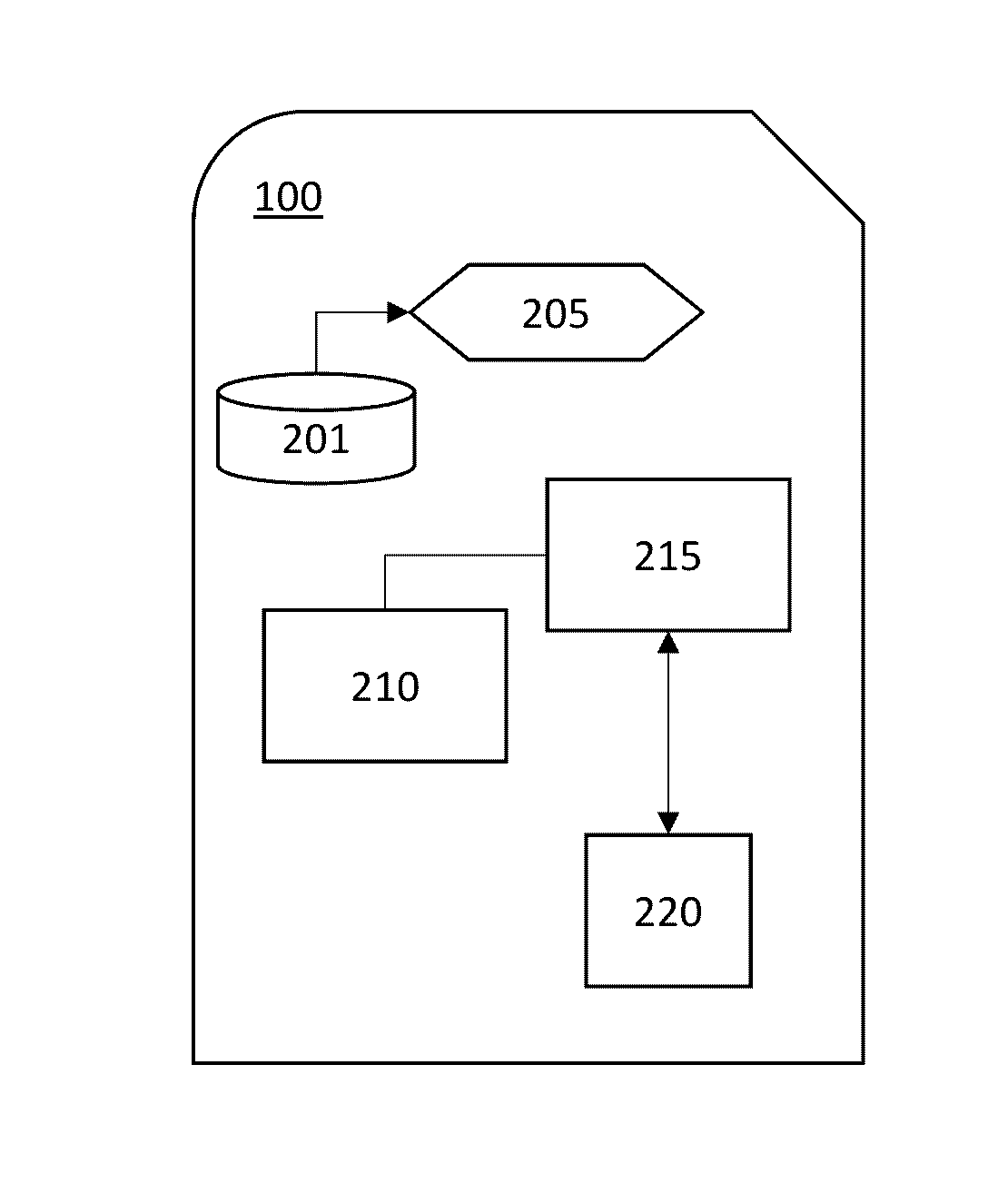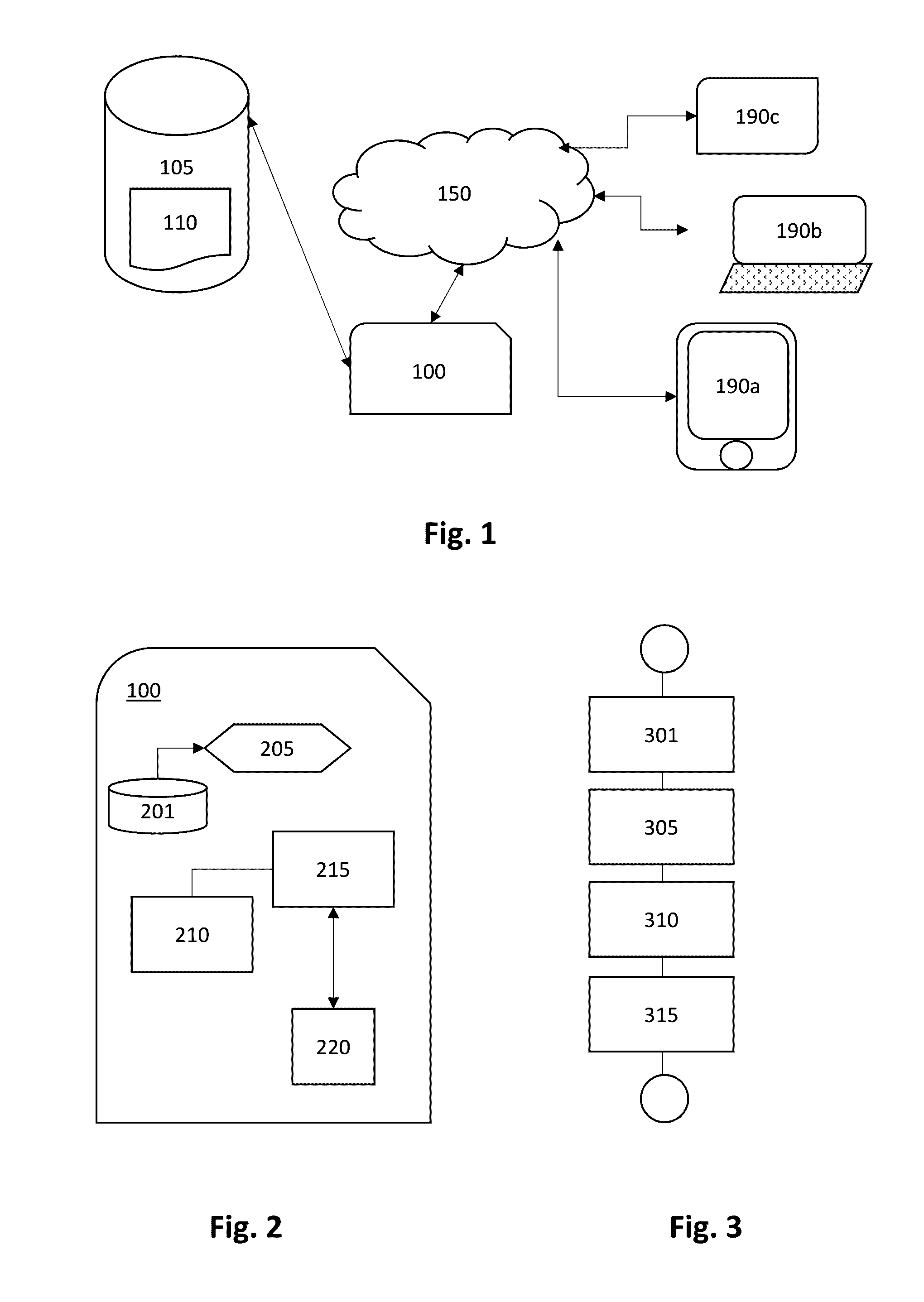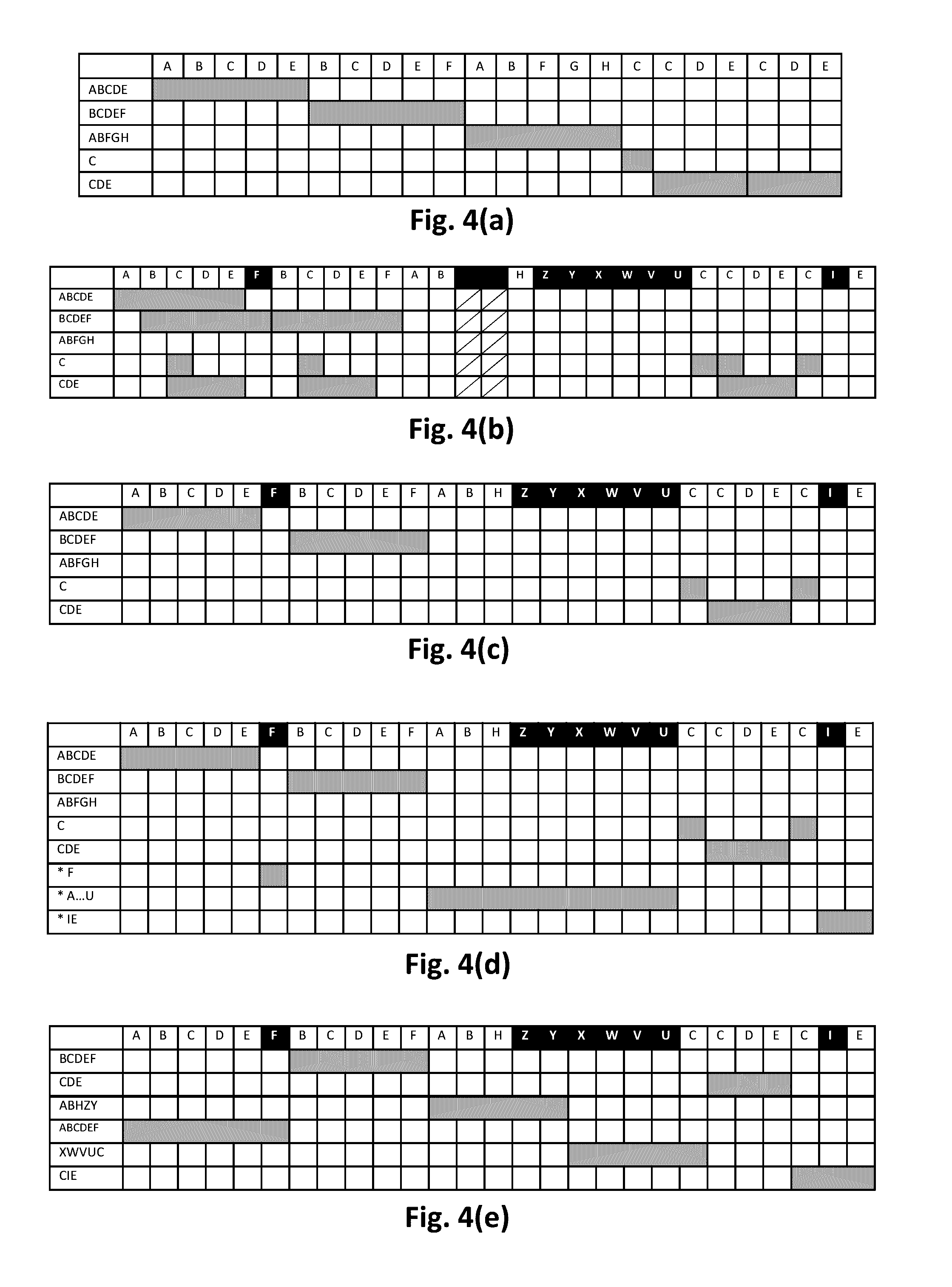Method and system for managing client data replacement
a client data and management system technology, applied in the direction of specific program execution arrangements, transmissions, instruments, etc., to achieve the effect of efficient and fast algorithm, avoiding incremental patching, and efficiently synchronizing changes
- Summary
- Abstract
- Description
- Claims
- Application Information
AI Technical Summary
Benefits of technology
Problems solved by technology
Method used
Image
Examples
Embodiment Construction
[0025]FIG. 1 schematically illustrates an arrangement comprising a server system 100 and plural client systems 190a, 190b, 190c. The server 100 and clients are connected over a network 150 such as the internet. The server 100 has access to storage medium 105 on which is stored a software application 110. The clients 190a, 190b, 190c are configured to download this software application 110 from the server 100 and to execute the application 110 without having in its possession the entire software application. As such, this set-up is well known and will not be elaborated upon further.
[0026]To facilitate the above execution of the application 110 by the clients 190a, 190b, 190c, the server 100 is configured for dividing the application 110 into small parts, hereafter known as chunks. The size of the chunks can be chosen arbitrarily.
[0027]Typically a balance must be struck between larger and smaller. The larger a chunk is, the higher the chance its download might fail. However, the small...
PUM
 Login to View More
Login to View More Abstract
Description
Claims
Application Information
 Login to View More
Login to View More - R&D
- Intellectual Property
- Life Sciences
- Materials
- Tech Scout
- Unparalleled Data Quality
- Higher Quality Content
- 60% Fewer Hallucinations
Browse by: Latest US Patents, China's latest patents, Technical Efficacy Thesaurus, Application Domain, Technology Topic, Popular Technical Reports.
© 2025 PatSnap. All rights reserved.Legal|Privacy policy|Modern Slavery Act Transparency Statement|Sitemap|About US| Contact US: help@patsnap.com



